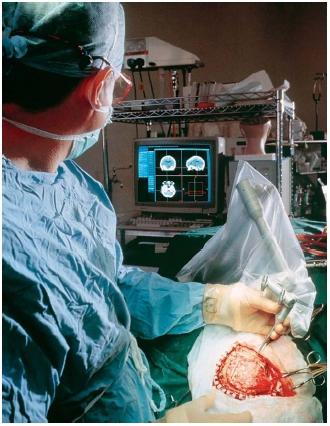A simple operation that ends the misery of migraines while rejuvenating the face has been devised by surgeons. The one-hour procedure offers fresh hope to the millions whose lives are blighted by crippling headaches. In the UK, migraines affect one in eight men and women and lead to more sick days than any other illness - costing the economy billions a year. Current drugs have side-effects and do not work for everyone, but the operation, which is based on the forehead lifts carried out by cosmetic surgeons, is more than 90 percent effective at easing the pain.
And it has few side-effects, the official journal of the American Society of Plastic surgeons reports. Professor Bahman Guyuron, the leading plastic surgeon who made the discovery, said: "I have a huge number of patients who have not had any symptoms for over five years. "They tell me, one after the other, that their lives have changed."
Guyuron, a director of the American Board of Plastic Surgery who has published more than 150 articles in respected medical journals, stumbled on the idea while carrying out forehead lifts for cosmetic purposes. He realised that removal of the "frown muscle", or Corrugator supercilii, seemed to stem migraines. Guyuron believes many migraines are caused by nerves in face, neck or scalp being irritated by over-tight muscles and that removing or loosening these eases the pressure and therefore the pain. He has carried out numerous studies into the technique and regularly trains other surgeons.
The "frown muscle" is most commonly operated on, providing the added benefit of a smoother forehead. Other migraine hotspots include the temporalis muscle, which is found in the temples and plays an important role in chewing. Stopping it triggering migraines results in the eyebrows being shifted slightly to the side - and a more youthful look. In his latest study into the subject, Guyuron has compared the surgery with a dummy treatment in which patients were operated on but their muscles left intact.
Forty-nine men and women with severe migraines had the proper operation and 26 the other procedure. A year later, 57 percent of patients who had the full operation had been cured, compared with just 4 percent in the other group. In all, 83 percent of those who had muscle removed said their migraines were much less severe or had stopped. But when other studies involving more than 400 patients are taken into account, the success rate soars to above 90 percent.
Guyuron said: "Patients are back to work in a week or less and the benefits last for the rest of their lives. I would not call the surgery radical. If it was a 10-hour operation I would call it radical. "There was no cure for migraines until I discovered this op. Every patient had to take medication to reduce the potential of migraines or to take the symptoms away." Lee Tomkins, of British charity Migraine Action, welcomed the innovation but said: "Caution is needed until a scientific assessment of such an intervention is made. We would certainly encourage any future clinical trials."
skip to main |
skip to sidebar

Reliable and accurate advice about cosmetic surgery and aesthetic procedures. Written by surgeons for anyone considering cosmetic surgery
About Me

- Justin Stanton MD MMed(Plast) FRCS(Plast)
- I'm the Head of Cosmetic Surgery at the London Surgical Institute. Me and my colleagues write this blog so that you are given the best information on plastic surgery and all related cosmetic procedures...
Labels
- Abdominoplasty/Tummy tucks (1)
- bad surgery (1)
- basic information (5)
- before and after (2)
- blepharoplasty/eyelift (1)
- botox (1)
- breast implants (1)
- breast surgery (1)
- celebrity (5)
- cosmetic surgery (9)
- eyelashes (1)
- facelift (1)
- hair transplants (1)
- las vegas surgery (1)
- legal cases (1)
- liposuction (1)
- news (1)
- Our Mission (1)
- plastic surgery ethics (3)
- Recommended Reading (1)
- rhinoplasty/nosejob (2)
- rhytidoplasty/facelift (2)
- surgery caution (2)
- surgery news (4)
- warning (1)
